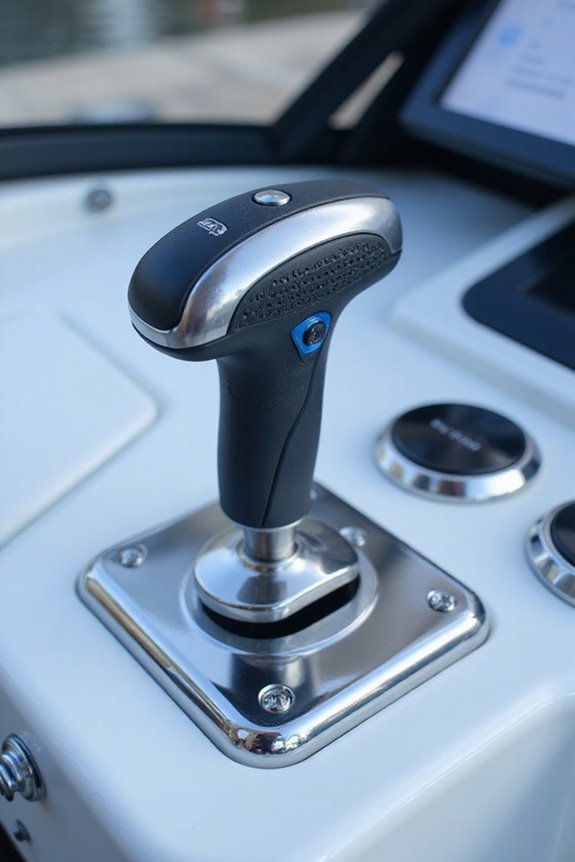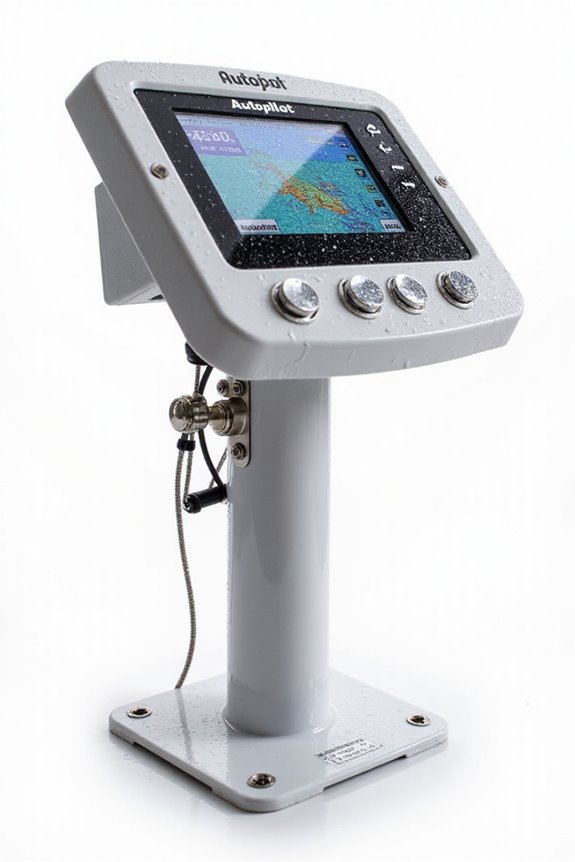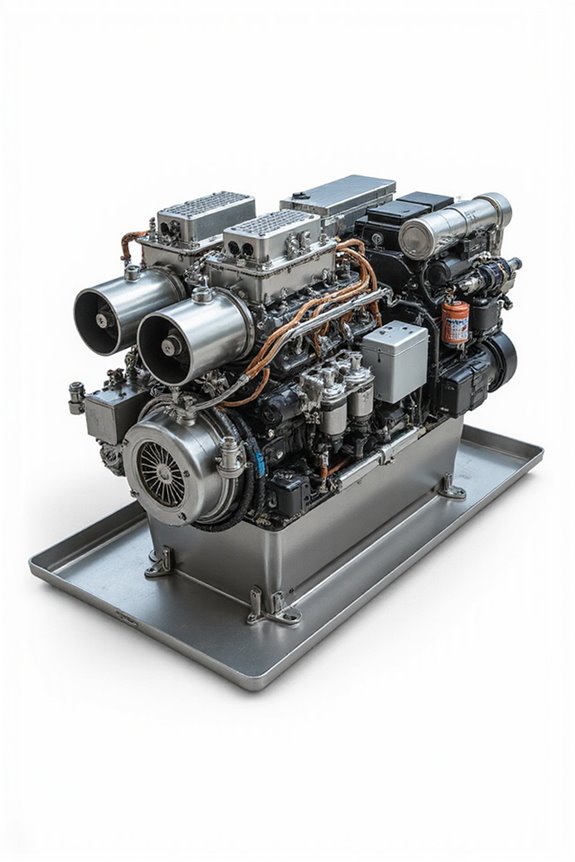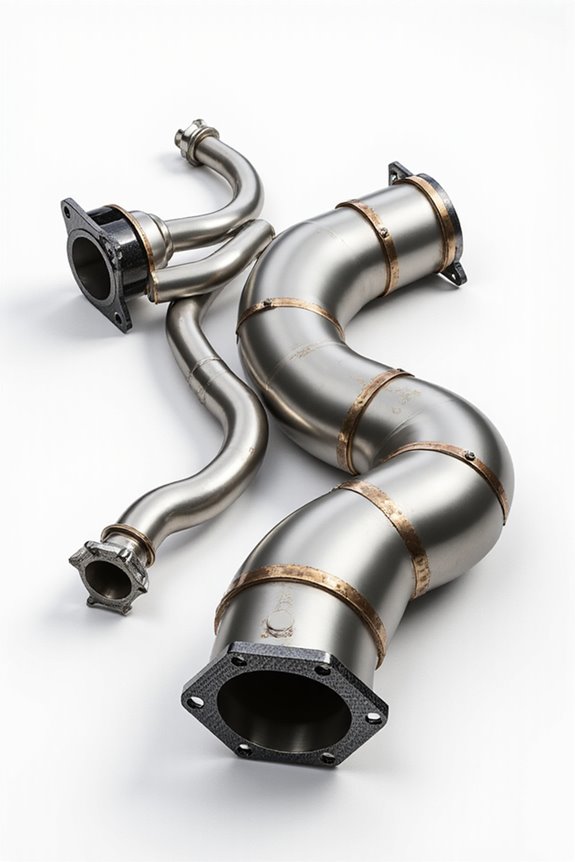Joystick piloting has transformed how we handle inboard boats, putting steering, throttle, and thrusters all into one joystick—easy, right? It lets us move our boats sideways, spin them around, or glide forward smoothly, making docking feel less like a juggling act. Thanks to smart software that’s keyed to actual boat speed, not just engine RPM, control feels precise and natural. And if you keep exploring this tech, you’ll see how it boosts both safety and confidence on the water.
Key Takeaways
- Joystick piloting combines steering, throttle, transmission, and bow thruster for intuitive 360-degree boat control.
- Advanced software shifts to speed-based control, allowing precise, smooth maneuvers including Skyhook and Auto Heading features.
- Maneuverability improvements reduce docking stress by enabling sideways, diagonal, and spin movements even in tight marinas.
- Integration with inboard propulsion systems unifies engines and thrusters, enhancing control in single- or multi-engine setups.
- The technology increases boater safety and confidence by minimizing collisions, drift, and propeller strikes during complex maneuvers.
Understanding Joystick Piloting Technology
While some might assume piloting a boat requires juggling a bunch of controls, joystick piloting technology changes the game by putting steering, throttle, transmission, and bow thruster all into one handy joystick. Imagine having the power to glide your boat forward, backward, sideways, or even spin it on the spot just by moving a single stick—that’s joystick mechanics at work in all its glory. This setup really amps up control precision, correlating how far you push the joystick with exact throttle response. No more twisting knobs or flipping switches while trying to dock; everything happens naturally, almost like magic. Isn’t it nice to feel part of a boating community where handling complex maneuvers suddenly feels straightforward and even a bit fun? We’re all in this together, mastering the waters smoothly.
Key Software Innovations Enhancing Control

As technology keeps advancing, software innovations are becoming the real game-changers in joystick piloting for inboard boats. These software upgrades have shifted control schemes from rpm-based inputs to vessel speed-based ones, boosting control precision by syncing throttle adjustments with actual speed, not just engine revs. Ever heard of Skyhook or Auto Heading? These smart features use GPS and nifty algorithms to hold your boat steady or on course without constant fiddling. Plus, slip control software in powerful engines fine-tunes propeller speed to smooth out maneuvers, reducing wear on transmissions. And for single-engine boats, new software now integrates bow thrusters directly with joystick input, offering 360-degree movement once thought impossible. With these advances, docking and tight handling feel less like guesswork and more like a shared art of effortless command.
Maneuverability Advantages for Inboard Boats
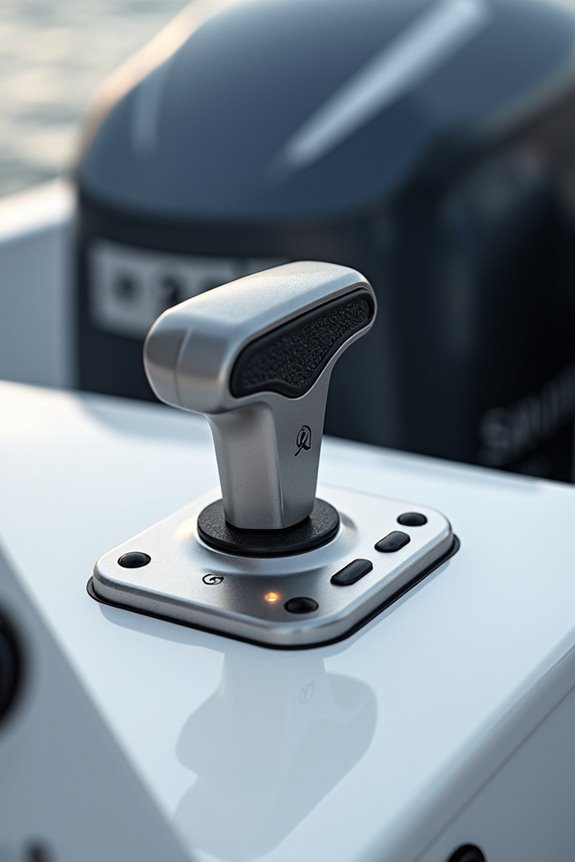
We’ve seen how smart software lets us take control of inboard boats like pros, but the real magic happens when it comes to maneuverability. With joystick piloting, tight space maneuverability becomes a breeze—even in cramped marinas where you’d expect a drama scene. We can effortlessly glide sideways or spin the boat on its own axis, thanks to advanced control techniques that let us orchestrate diagonal moves and independent engine thrust like a conductor with an orchestra. It’s like having superpowers for docking, reducing stress and the chance of bumping the dock or another boat. Whether you’re a newbie or a seasoned skipper, this system makes handling big inboard boats feel simple and precise. Ready to dock without breaking a sweat? Joystick control’s got your back.
Integration With Diverse Inboard Propulsion Systems
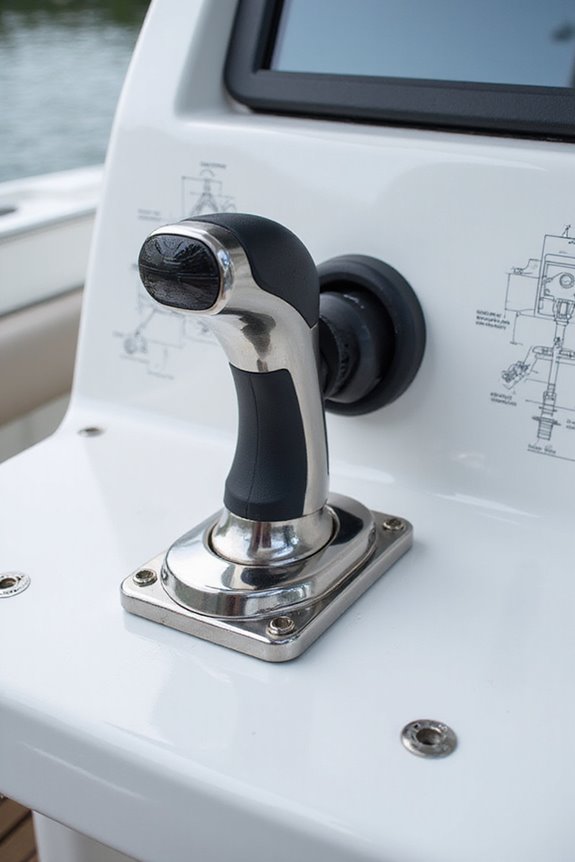
How does joystick control manage to work across so many different inboard propulsion setups? Well, it’s all about smart inboard integration that unites engines, gearboxes, steering, and thrusters into one smooth system. Whether you’re piloting a single-engine boat with Mercury Marine’s intuitive joystick steering or handling a multi-engine beast synced by SmartCraft, these propulsion systems respond as one, making your moves seamless. Thrusters, especially bow and stern varieties, often team up with electronic controls to give you that extra nudge when docking. Even pod drives like Volvo Penta IPS bring their azimuthing magic right into the mix. In short, joystick piloting ties it all together, so no matter your boat’s setup, you can navigate with confidence—and maybe even impress your crew a little.
Boater Experience and Safety Improvements
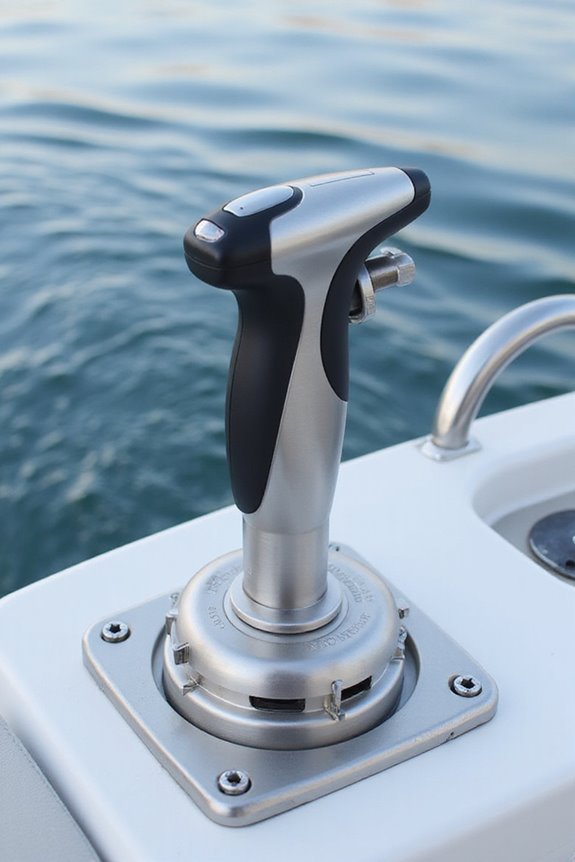
Although piloting a boat has always required skill, joystick control has really changed the game for many boaters, making every maneuver feel smoother and less intimidating. With this tech, we gain boater confidence, turning tricky docking or tight marina spots into manageable tasks. It feels almost like the boat obeys our thoughts! Plus, joystick systems actively reduce accidents by improving control during sudden moves or in strong currents. That’s real peace of mind we all appreciate—no more white-knuckle moments. And did you know accident reductions, including fewer injuries, have followed widespread joystick adoption? These controls also cut down drift and propeller strikes, keeping us safer. So, if you’ve hesitated before, joystick piloting might just be the friendlier, smarter way to sharpen your skills and enjoy the water more confidently.
Industry Trends and Future Directions
Smooth control and safety improvements with joysticks have set the stage for some exciting shifts in the boating world. We’re seeing significant market expansion as joystick piloting becomes more popular—not just with seasoned captains but also with new boaters craving better user accessibility. Technology is advancing fast; features like Mercury Marine’s SmartCraft reduce unwanted drifting by up to 74%, making docking smoother than ever. Plus, integration with digital dashboards means even first-timers can feel confident behind the controls. Are you ready for smarter boats? Autonomous boating isn’t just science fiction anymore—it’s on the horizon. As the industry embraces durability, family-friendly designs, and hybrid propulsion, we’re all stepping into a future where boating feels more accessible, intuitive, and yes, a bit cooler. So, why not join this evolving wave?
Frequently Asked Questions
Can Joystick Piloting Systems Be Retrofitted to Older Inboard Boats?
Coincidentally, while we all want easier control, retrofitting costs and installation challenges mean joystick systems fit only newer boats with digital controls. We recognize wanting this upgrade, but compatibility limits us as a boating community for now.
How Does Joystick Piloting Affect Fuel Efficiency Compared to Traditional Controls?
When we analyze fuel consumption and steering efficiency comparison, we see joystick piloting reduces fuel use by enabling precise, smooth maneuvers. Together, we can enjoy better control and lower fuel costs compared to traditional steering methods.
What Maintenance Is Required for Joystick Piloting Electronic Components?
Like tending a garden, regular electronic inspections keep our joystick flourishing; we watch for corrosion or faults and promptly handle component replacements together, ensuring smooth sailing and a united crew behind every crisp control response.
Are There Specific Training Programs for Mastering Joystick Piloting on Inboards?
It is understood that finding the right training resources matters to you. Luckily, certification programs and hands-on sessions by manufacturers and marinas help us all master joystick piloting on inboards, building confidence and cruising as a connected boating community.
How Does Joystick Piloting Perform in Emergency or Power Failure Situations?
In emergency response, we trust joystick piloting for precise control, but power management is essential since total power failure disables it. Practicing manual controls builds confidence, ensuring we’re ready and united when challenges arise on the water.

